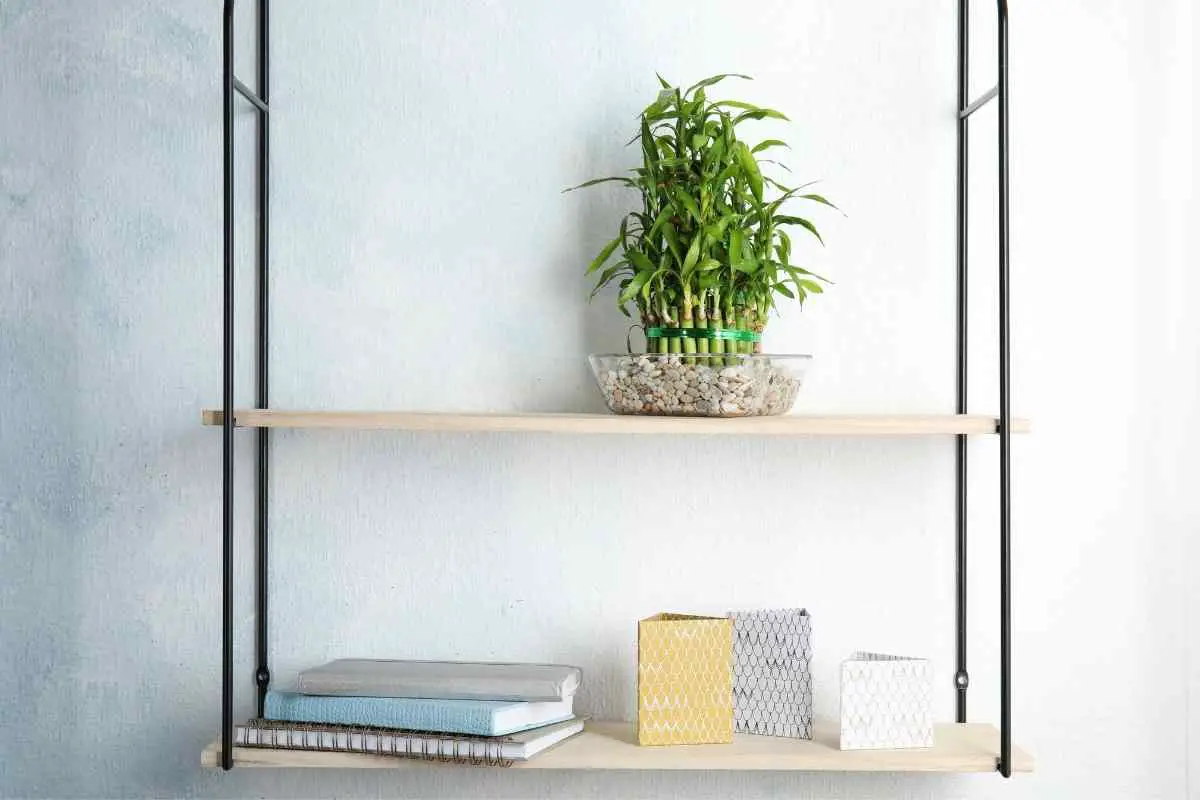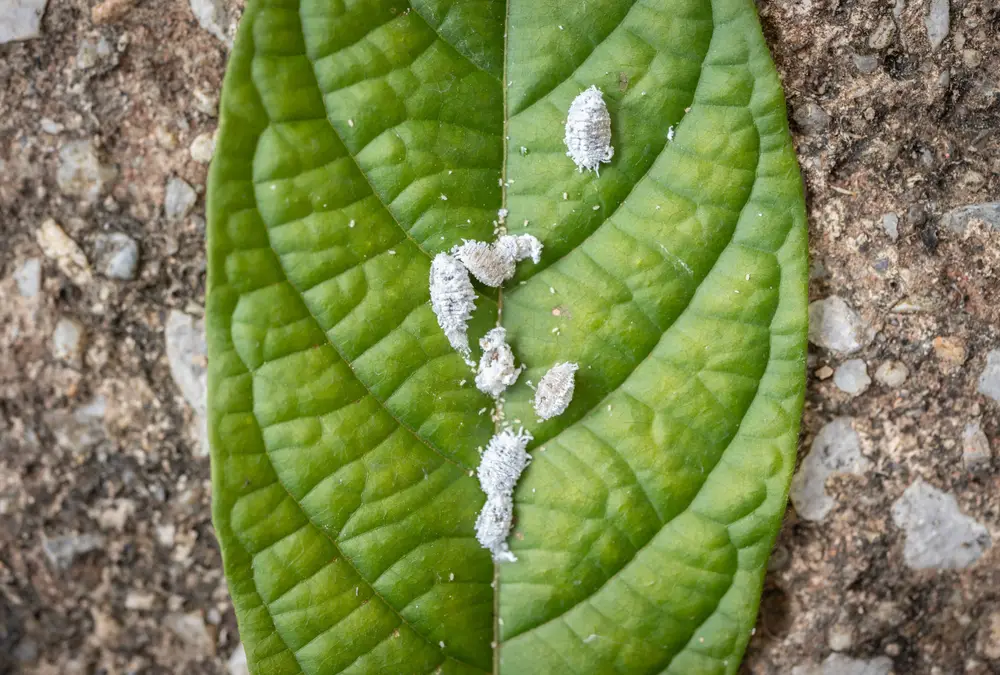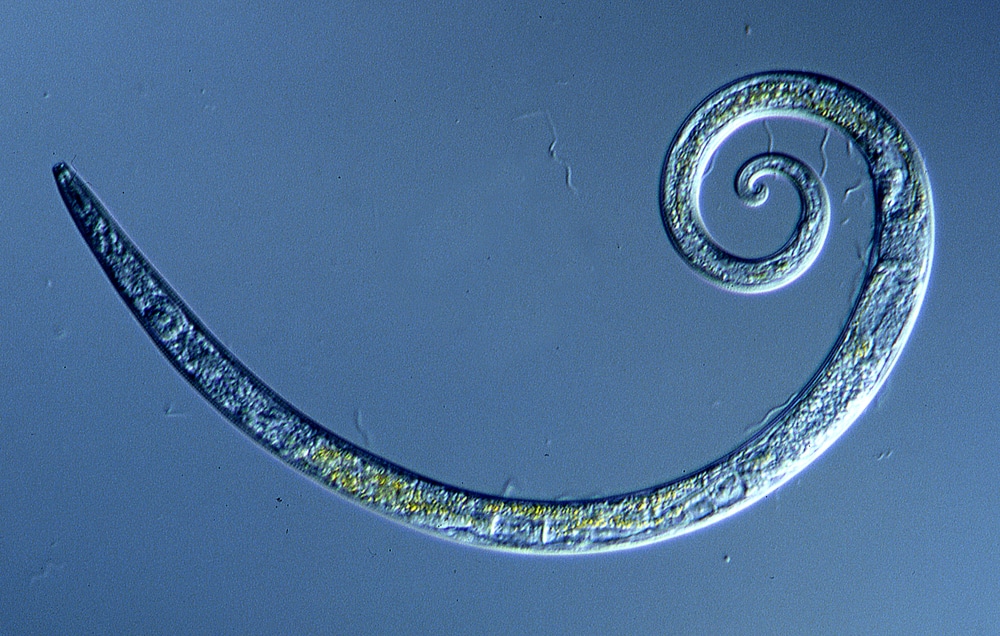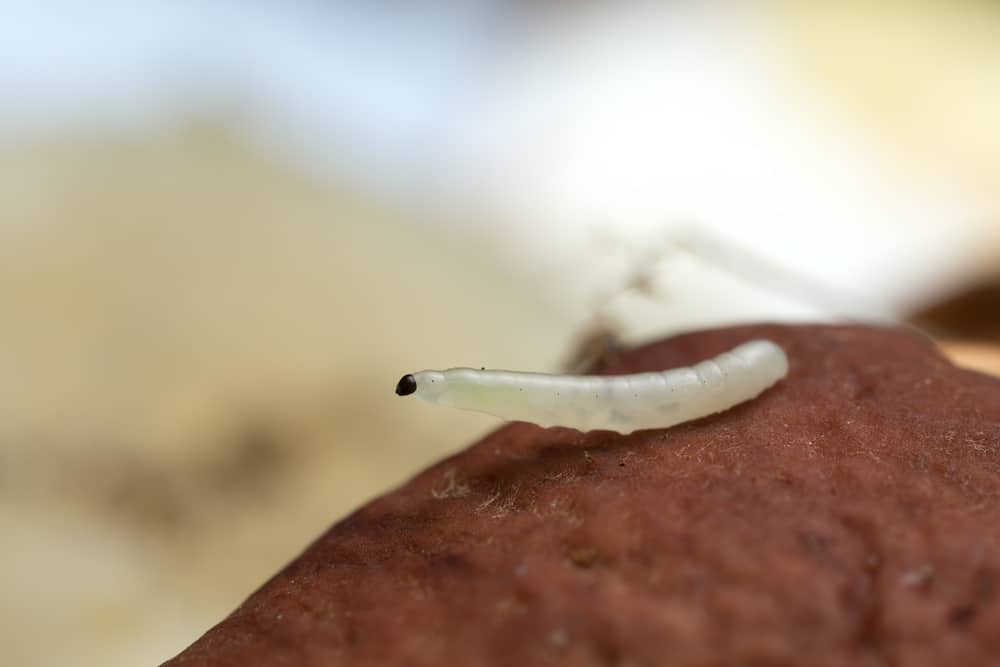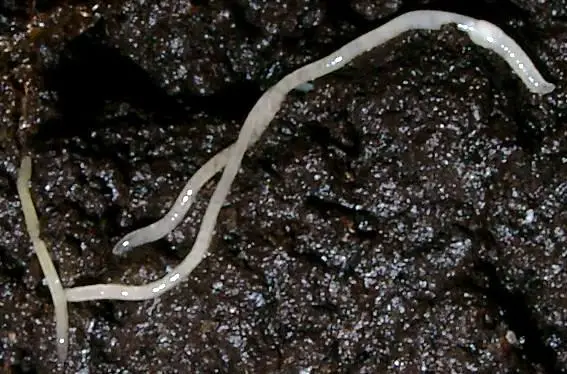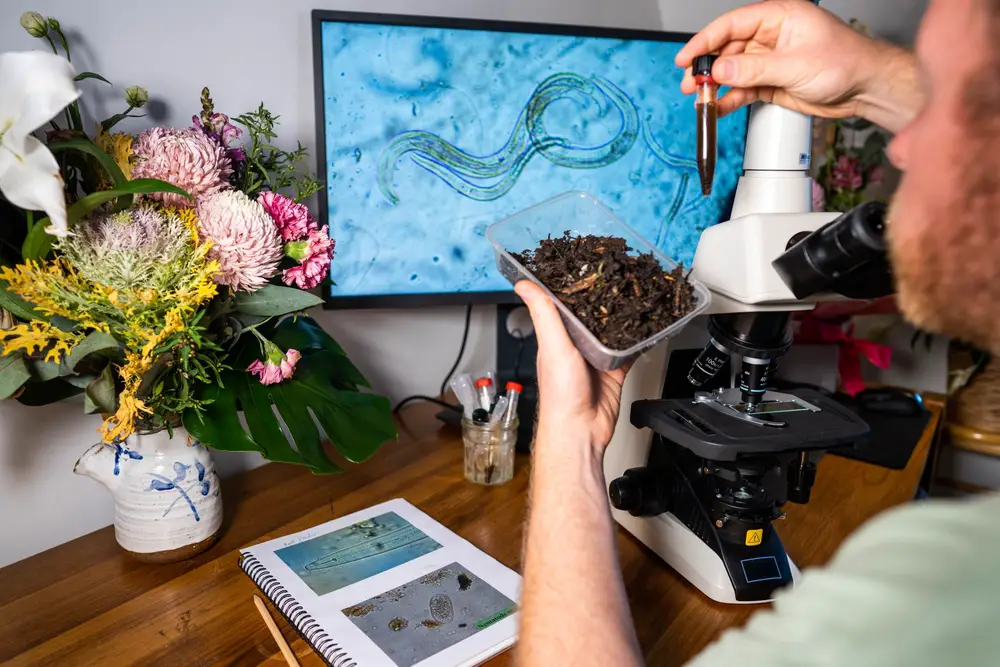There are various species of bamboo that make excellent landscaping options outdoors and when potted indoors.
Nearly all species of bamboo grow quickly and some are the fastest-growing species of plant in the world!
Bamboo is considered an evergreen perennial and is relatively easy to care for, although they do have some common issues that cause issues for novice gardeners and even seasoned green thumbs.
The five main reasons you may have dying bamboo are due to excessive temperatures, poor soil condition, insect infestations, and issues with watering or light. Ensure you fertilize and water your bamboo regularly, although do not overwater. Keep your bamboo in areas with bright or indirect light and shelter from excessive temperature ranges. Be sure to regularly check your bamboo plant for insect infestations.
Various Bamboo Species
While the exact figure is revised frequently, experts estimate there are around 1,400-1,600 species of bamboo in the world.
Bamboo has been regarded over centuries for its decorative features and is a common feature used as a screen or partition in many gardens.

The Bambusa vulgaris species literally translates to ‘common bamboo’ and is widespread in Southeast Asia.
In Northern America, it is more common to find Bambusa oldhamii used in outdoor landscaping projects.
Indoor bamboo plants are also very common, especially the lucky bamboo plant (Dracaena sanderiana) which is often sent as a housewarming gift and is said to increase feng shui properties.
The most common issues arise in plants that are potted indoors as while bamboo is a fairly hardy plant, it still needs enough water, sunlight, and good soil conditions to live a healthy life.
Let’s look at 5 of the most common issues that can cause your bamboo plant to die.
1. Bamboo Is Sensitive to Temperature Indoors
Bamboo plants are one of the most versatile plants you can ever grow, although some varieties fare better than others in different climate conditions.
Bamboo prefers subtropical conditions to thrive, and will always grow better when planted outdoors. Many species of bamboo can withstand extremely cold temperatures when planted outside.
While planting your bamboo plant outdoors leaves little chance of moderating the temperature, a bamboo plant potted indoors will require a specific temperature range that will promote healthy growth.
Preferred Temperature Ranges for Bamboo Species
The Seabreeze bamboo (Bambusa malingensis) can withstand temperatures as low as 18°F.
Giant Timber bamboo (Bambusa oldhamii) is one of the most common bamboo species grown throughout the US and can withstand temperatures as low as 22°F.
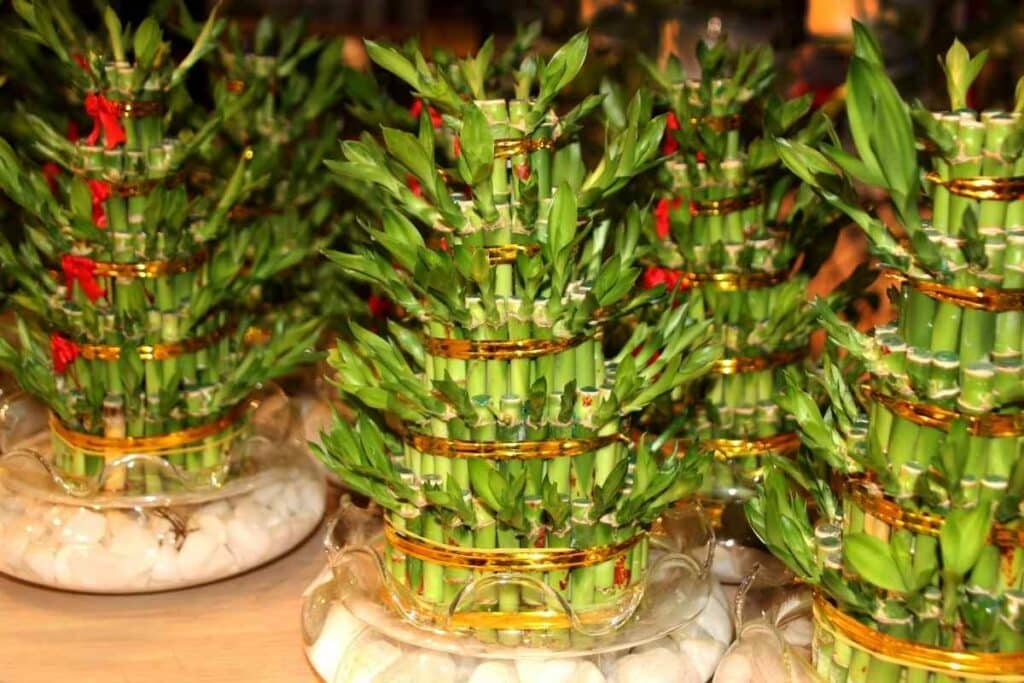
Lucky bamboo plants prefer a temperature range of 65–95°F when planted indoors.
They are very sensitive to colder temperatures and should never be placed near a cooling vent or air-conditioning system.
Give Your Best: A space with a maintained temperature will help your lucky bamboo plant live a healthy and happy life.
2. Bamboo Needs Good Soil
Bamboo is considered an outdoors plant, and although many have had success growing them indoors, it’s certainly more tricky.
This is due to the fast-growing nature of bamboo, which has a fast-growing rhizome root system that grows aggressively and requires a lot of nutrients to fuel the plant’s rapid growth.
Every species of bamboo has its own preferred soil conditions but most prefer soil that is loamy, light in structure, and rich in organic matter and nutrients.
A soil that contains equal parts of sand, silt, and clay will retain moisture without waterlogging the plant and is perfect for growing bamboo.
The Best Soil and Fertilizer Mix for Bamboo
Fertilizing your soil regularly will also help maintain the soil nutrient needed to grow bamboo.
Mixing soil with 20% composted manure ensures a long-term nutrient supply to the soil.
A 5% mix of Biochar (a type of charcoal) also adds and retains nutrients that aid plant growth.
Pot Your Bamboo with Enough Room for Roots to Grow
Another consideration when potting your bamboo is root size and growth.
Bamboo tends to grow very quickly and its roots are quite aggressive.
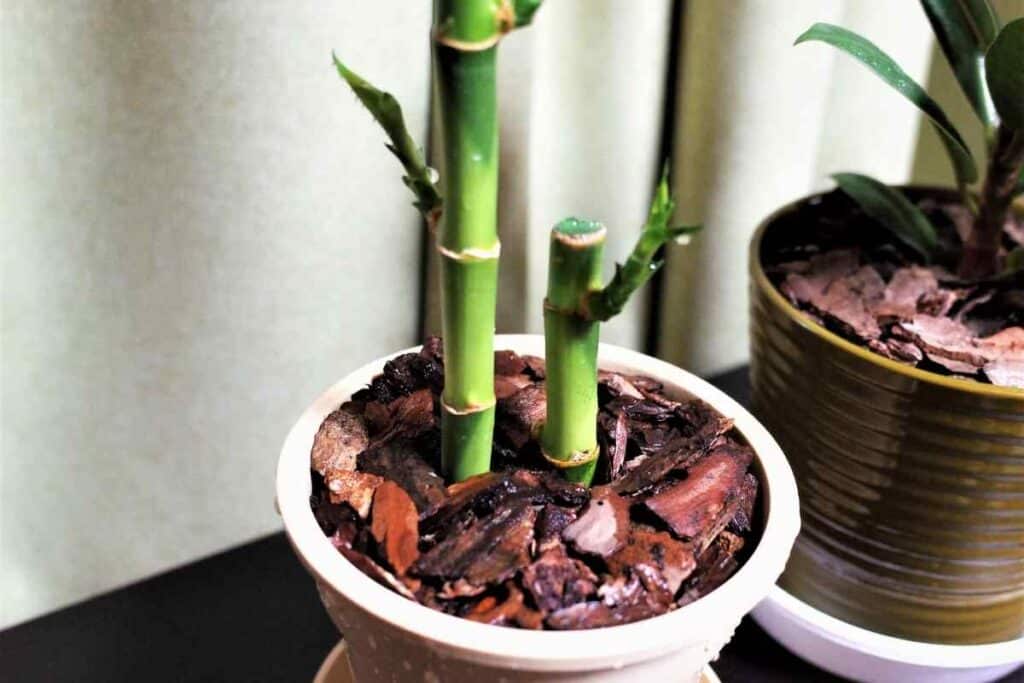
Potting them in a pot that is too small will cause crowding and reduce the health of your bamboo. A minimum pot size would be 10 gallons.
To check when your bamboo requires repotting:
- remove it from the pot
- and check to see if the roots are crowding or strangling themselves
If so, then re-pot in a much larger pot.
Using a 20-30 gallon pot size will allow for a few years of growth before needing to be repotted.
3. Water Your Bamboo Regularly
Nearly all species of bamboo require regular watering and their shallow rhizomes and roots will require watering at least once a week.
If your bamboo plant is in a warm climate, then more frequent watering is recommended, say 2-3 times per week, especially during the summer.
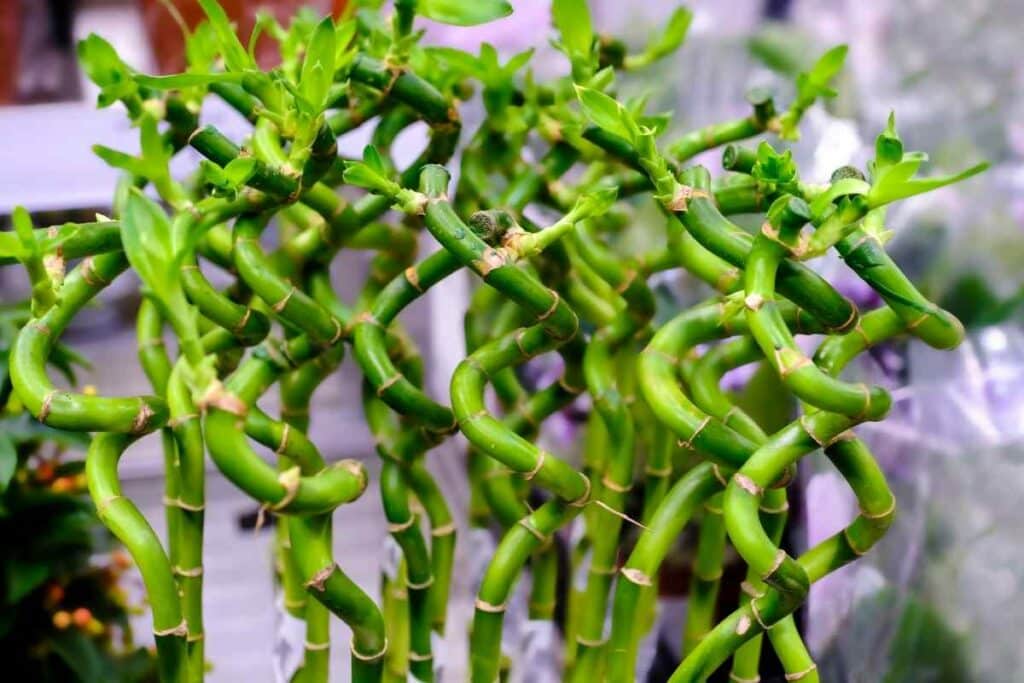
If you have an indoor variety of bamboo such as the lucky bamboo, then a light watering every 7-10 days is sufficient.
Make sure your lucky bamboo is potted in soil that drains well.
From Experience: Do not soak your lucky bamboo for prolonged periods of time as this will cause yellowing of the leaves and may also cause root rot.
Avoid Overwatering Your Bamboo
If you notice that your bamboo is beginning to show yellow sprouts or leaves, then it’s a common sign that you are overwatering your bamboo plant.
Bamboo likes well-drained soil that doesn’t dry out too quickly.
If the soil retains too much moisture, it can cause root rot and prolonged exposure to excessive moisture around the roots will cause dying bamboo.
4. Your Bamboo Needs Light to Survive
All bamboo species can thrive under the right lighting conditions and the amount of light preferred varies from one species to the next.
All bamboo species prefer at least 6 hours of direct sunlight each day, and as a rule of thumb, the more sunlight the better.
Many species of bamboo will tolerate low-light or partial shade conditions, but it’s best to check with a nursery attendant before purchasing.
Bambusa oldhamii is one of the most common and hardy bamboo species and thrives in full sun in most parts of Northern America.
Useful to Know: Some southern states in the US are too hot for bamboo in summer and this tends to burn the leaves or turn stalks yellow.
Indoor Bamboo Requires Different Lighting
Indoor bamboo requires different amounts of sunlight to their outdoor cousins.
Lucky bamboo is far more sensitive to temperature extremes and will easily burn if exposed to prolonged temperatures more than 95°F.
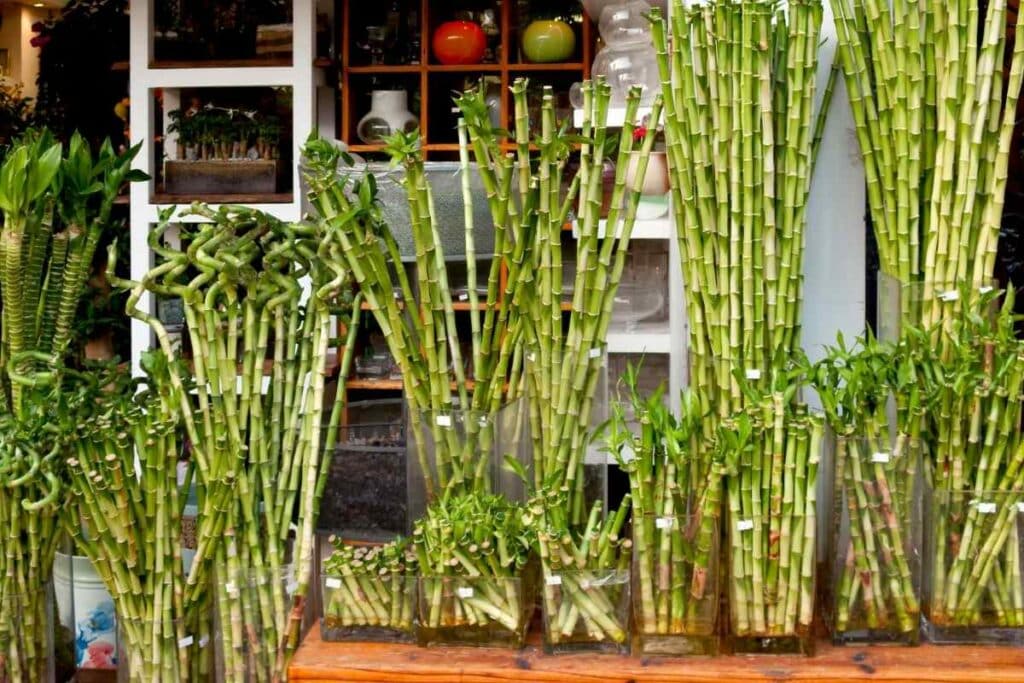
Your lucky bamboo is best potted in an area that receives 6 hours of indirect sunlight each day.
If your bamboo does not have enough light, then its leaves will become yellow.
5. Check Your Bamboo for Insects
Although most species of bamboo are strong and resilient to pests, insect and bacterial infestations can cause severe issues for the health of your bamboo, especially when left untreated.
Mealy-bugs, beetles, mites, aphids, scales, and bamboo mites are all an issue for any bamboo plant.
Most of these insects can be removed using non-chemical solutions or insecticidal soaps.
Regularly check your bamboo plants for insects and if you find any indication of insect or bacterial infestation, then it’s best to act quickly and administer an insecticide solution.
Summary
Bamboo is an excellent addition to any garden as it quickly grows decorative leaves and tall stems that are ideal as screens and fencing or simply to add some greenery.
Bamboo is hardy, resilient to insects and diseases, and grows in a wide range of climatic zones, making them ideal for any garden in the US.
Bamboo prefers at least 6 hours of daylight each day when potted outdoors and at least 6 hours of indirect light when potted indoors.
Water your bamboo plant regularly and provide it with loamy, well-drained, and nutrient-rich soil and you’ll be well on the way to growing a happy and healthy bamboo plant.
